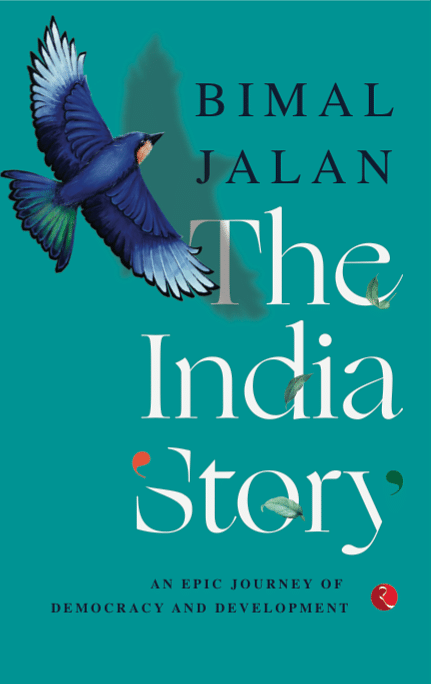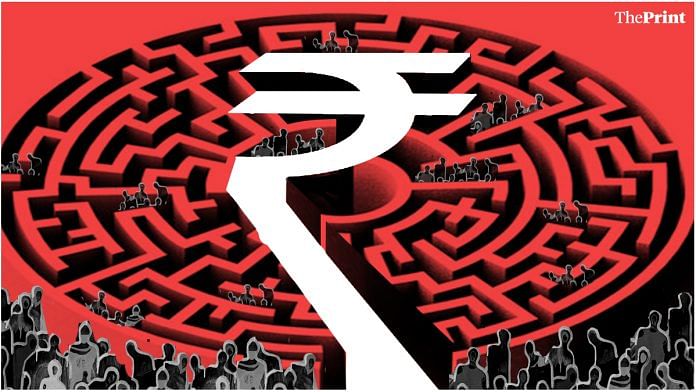At first glance, the title of this essay may seem a bit odd. In the first half of the decade of 2000–10, India was being commended for its excellent economic performance by economists, expert commentators and international agencies. It was one of the fastest-growing economies, and there was an emerging consensus that if India followed the right policies, by 2025, it would be the third-largest economy in the world. The optimism about India’s growth potential was further reinforced by India’s success in avoiding ‘contagion’ after the 1997 East Asian financial crisis, which adversely affected a number of other developing countries. In 2004, India’s BOP position was stronger than at any time in its post-Independence history, and it had one of the highest levels of foreign exchange reserves in the world—amounting to $130 billion.
All this was certainly true. However, looking ahead, it was not clear whether India’s current position would continue over the long run. Thus, for example, as far back as 1956, the Second Five-Year Plan was launched with great fanfare after considerable debate among leading economists in India and abroad. The Plan was supposed to bring about a transformation in the economy, make India self-reliant and abolish poverty in the following 25 years, i.e., by 1981. However, very soon, the country was engulfed in a major foreign exchange crisis and remained trapped for the next 20 years in a vicious circle of low economic growth and high poverty. Similarly, in the early 1980s, with foreign exchange reserves beginning to build up, the savings rate crossing the 20 per cent mark for the first time and the economy running a food surplus, many felt that the time for India’s economic take-off had finally come.
However, before the end of the decade, the economy ran out of steam again and in 1990–91, it was caught up in yet another serious BOP crisis. The new government, which came to power in 1991, launched an impressive programme of economic reforms, which thankfully yielded results. The industrial licencing system was abolished, foreign exchange controls were liberalized, import tariffs were lowered and the burgeoning fiscal deficit was reduced.
Also Read: India needed a crisis to reform. It got one in 1991, thanks to Nehru & Indira’s Soviet model
During the four-year period of 1993–94 to 1996–97, the growth rate exceeded 7 per cent per annum, and once again, there was considerable optimism about India’s economic future. However, soon the economy slowed down again and in the first three years of the new millennium (2001–02 to 2002–03), the average growth rate was less than 5 per cent, partly because of the severe drought in 2002–03. The picture changed dramatically once again in 2003–04, and the growth rate was expected to exceed 8 per cent, which was the second-highest growth rate in the world after China, whose growth rate was close to 10 per cent.
It was natural to ask at that point in time—has anything really changed about India’s economic prospects, or is the economy likely to continue to swing from a positive to a negative outlook?
Naturally, there was no unanimous or unequivocal answer to this question. There was indeed a fundamental change in India’s global economic position and opportunities for it to accelerate its growth rate were truly immense. In view of the changing role of knowledge-based services (such as professional and IT services) in the overall growth, the sources of comparative advantage of a nation were vastly different then from what they were 50 or even 20 years ago.
Very few developing countries were as well placed as India to take advantage of the phenomenal changes that had occurred in the fields of production technologies, international trade, capital movement and the deployment of skilled manpower. An important change in production technology from India’s point of view was the importance of IT and software in the value of output and productivity in all sectors of the economy, including manufacturing. India had the knowledge and the skills to produce and process a wide variety of industrial and consumer products and services.
Also Read: Modi govt’s industrial policy shows it has run out of ideas & is taking India back to pre-1991
Another important factor in India’s favour was international capital mobility and the integration of global financial markets. Domestic savings continued to be important for the country’s development. However, scarcity of domestic capital was no longer a binding constraint. Increased mobility of capital had ensured that global resources flow to countries which showed high growth and high returns. It was now possible for India to participate in the virtuous circle of higher growth, higher external capital flows, and higher domestic incomes and savings, which in turn could lead to further growth.
While there was no doubt about India’s immense ‘potential,’ realizing the advantage of new opportunities, would require a change in the country’s vision of the future and its economic strategy. Some changes had no doubt been made in this direction, particularly in the 1990s, but much still remained to be done. On present reckoning, it was not yet clear that economic performance in the foreseeable future would significantly exceed the post-1980’s trend rate of growth. The performance of economy in the immediately preceding years had certainly been much better than what was achieved in the previous three decades (less than 4 per cent per annum), but it was certainly well below India’s potential. If India was prepared to grasp the opportunities that were available, the trend rate of growth could be 8 per cent per annum or more. There were, however, three important factors which could impede or delay the realization of its full economic potential. These were:
- the deadweight of the past in economic vision and strategy;
- fiscal disempowerment, largely due to the power of ‘distributional coalitions’; and
3. the growing ‘disjuncture’ between economics and politics in public life.

This excerpt from ‘The India Story’ by Bimal Jalan has been published with permission from Rupa Publications.






